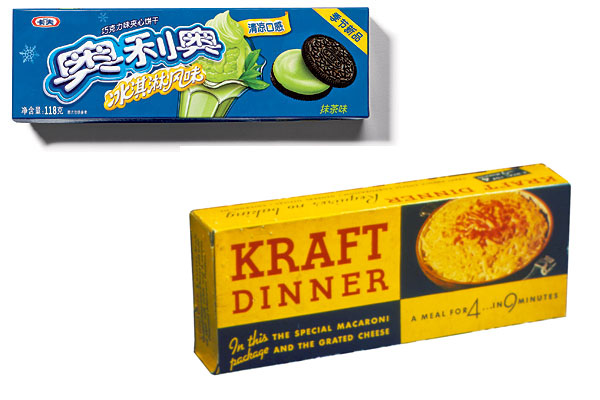
You’ve probably heard the news that Kraft is splitting into two companies: "a $16 billion North American grocery business, and a $32 billion global snacking business." The great food/cookbook author Mark Bittman has an interesting reaction:

I think, given Bittman’s focus on nutrition and cooking for one’s self*—and he’s an excellent guide to cooking simply and practically—I think he means this part: "The global snacks business has tremendous opportunities for growth as consumer demand for snacks increases around the world."
As the Trib article mentions, the "$32 billion global snacking business" is twice as big as its domestic grocery business. How’d it get that way? In June, Victoria Lautman wrote a fascinating article of one of the prime drivers of Kraft’s international market: Sanjay Khosla, son of a military dentist and former soap salesman, and president of the company’s developing-markets division:
For Khosla, who oversees nearly $14 billion of business in over 60 countries, “wait a minute” translated into a creative hubbub that included hundreds of Oreo ambassadors on bicycles doling out samples in various Chinese cities and the towering basketball star Yao Ming explaining in commercials the traditional “twist, lick, and dunk” technique for enjoying the cookie. Above all, there was a massive overhaul that tailored the Oreo to local tastes, making it smaller and less sweet, with non-Western flourishes like green-tea-flavored filling and wafer rolls. Today, China is the second-largest consumer of Oreo products after the United States, and Khosla has clearly earned his transcendental cookie discourse.
But it wasn’t just marketing; as Kholsa and Northwestern prof Mohanbir Sawhney explain in "Growth Through Focus: A Blueprint for Driving Profitable Expansion" (PDF), the acquisitions run Kraft went on increased their international footprint through distribution networks:
However, organic growth may not be enough to get to the required scale, particularly when the company is betting on markets or categories in which it is not a market leader. Further, in some emerging markets, building distribution networks from scratch is a Herculean task. This is where acquisitions play an important role in the growth-through-focus approach.
And Kraft’s international business is seen as a reason for splitting the company:
By splitting the company up, Kraft could garner a more appropriate valuation for its faster-growing global snacks business and its slower-growth North American grocery empire, investors and analysts contend.
Rob Cox of Reuters:
The precise financial contours of the two groups won’t be clear for some time. But Kraft’s second-quarter results hinted at the split’s rationale. Developing markets posted organic sales growth of 13.5 percent, powered by higher volumes. North America’s 4 percent increase came purely from higher prices.
The WSJ:
Still, they welcomed the thinking behind the plan: to let Kraft’s higher-growth global brands thrive unencumbered by more-mature domestic business lines. Kraft’s share performance for the past year or so has lagged behind peers such as Nestlé, and Groupe Danone SA.
Warren Buffett, the company’s largest shareholder, who pooh-poohed the Cadbury acquisition, is pretty happy about it.
Related: The Reader‘s Mike Sula reviews The Greatest Thing Since Sliced Cheese, a 2005 coffee-table book about Kraft; Shira Ovide runs down the company’s complicated corporate history.
* Bittman’s TED talk is a good summary of his views about food.


